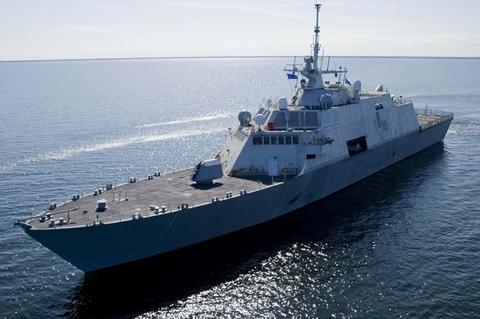USS Freedom (LCS-1) Prepares to Deploy

Let's start with the good news. The Navy is preparing the first monohull designed LCS 1 (littoral combat ship) USS Freedom (in contrast to the trimaran design LCS 2 USS Independence) for its first deployment. This is welcome news since it has been just over four years since the Freedom was commissioned. Of course the discovery of cracks in the hull and superstructure and a shaft seal leak during sea trials in 2011 (requiring six weeks in dry dock) didn't help matters, but, and more good news, these problems have been fixed.
Now, for those of you new to the LCS drama, what we are looking at here is an approximately 3,000 ton combat ship designed, as its name suggests, to operate in the near-shore (or littoral) sea environment. To this end the LCS is meant to perform effectively in three primary roles; Mine Countermeasure (MCM), Surface Warfare (SUW), and Anti-Submarine Warfare (ASW) using swappable module mission packages patterned after these three roles. Thus, in theory, proving the bane of such near shore threats as diesel submarines, mines, and swarming small craft.
However, and now for the bad news. The Defense Department’s director of operational test and evaluation released to the public today a report provided to Congress on Friday detailing the status of various programs. The problem is that this report finds that the Freedom is incapable of currently meeting several of the primary roles for which it was designed and delivered (to the tune of $670 million). For instance, in terms of the MCM role the ship's MH-60S helicopter is too underpowered to tow the mine detecting set. Moreover, in term of the SUW role both the 30 mm and 57 mm guns are failing to meet performance or reliability expectations.
If this were not bad enough the report finds the USS Freedom remains "not expected to be survivable" in combat and unable to "maintain mission capability after taking a significant hit in a hostile combat environment." Now, given that the littorals are the very definition of a hostile combat environment; with the plethora of on-shore, underwater, surface, and above water threats (including a dizzying array of platforms capable of delivering modern anti-ship missiles), the results of this report are most disturbing; especially considering the Navy wants to buy 55 of these ships. There is much more in the report - and we highly encourage readers to examine it for more on the LCS and the status of other current weapons programs.



Post new comment